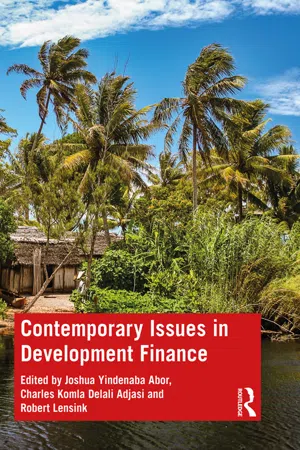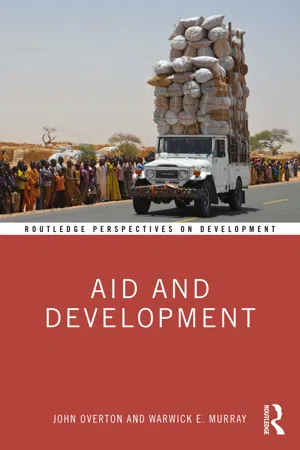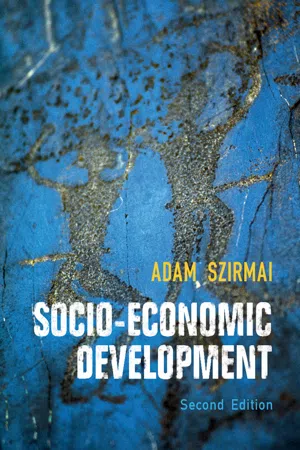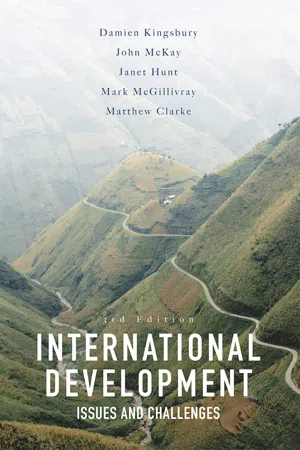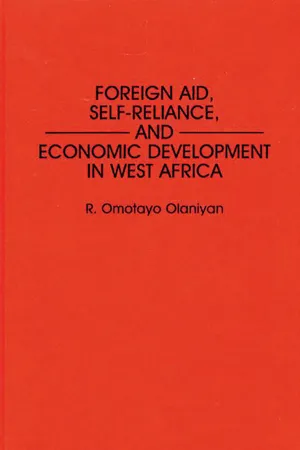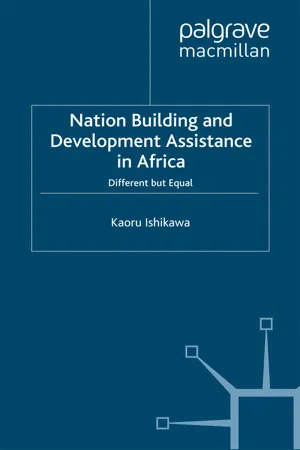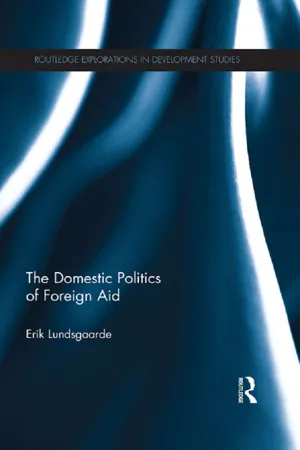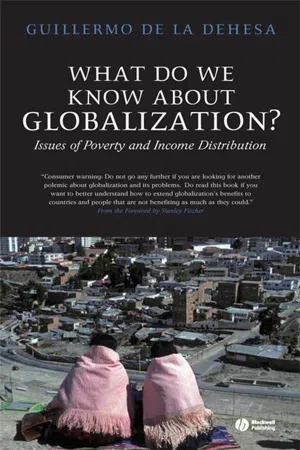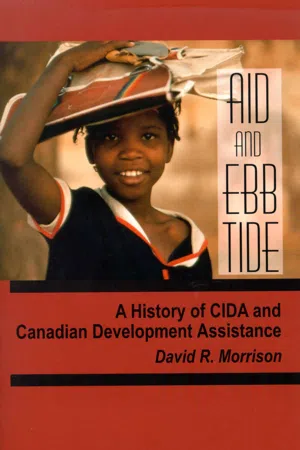Geography
Development Aid
Development aid refers to financial, technical, or material assistance provided by governments, organizations, or individuals to support the economic, social, and political development of developing countries. It aims to reduce poverty, improve infrastructure, and enhance healthcare and education. Development aid can take the form of grants, loans, or technical assistance, and is often provided by international organizations and donor countries.
Written by Perlego with AI-assistance
Related key terms
1 of 5
12 Key excerpts on "Development Aid"
- eBook - PDF
- Erin H. Fouberg, William G. Moseley(Authors)
- 2017(Publication Date)
- Wiley(Publisher)
Countries that receive the most aid relative to their GNI are shown in the yellow to red shades, with those receiving the most aid relative to their GNI in red. The geography of aid generally follows a north-south split, with donor countries in the Global North and recipient countries in the Global South. 78 CHAPTER 3 Geography of Development the World Bank and IMF that began flowing into Zambia in 1983. Zambia and other countries that receive structural adjustment loans must open their economies to foreign direct investment, privatize publicly owned enterprises, and establish free trade practices in order to receive large loans. The consequences for Zambia have been overwhelmingly negative. What were well- established industries, such as the textile industry, were under- cut by the flow of secondhand clothing into the country. Today, less than 10 percent of the population has a job in the formal sector of the economy. Instead, the informal sector, including the secondhand clothing trade, employs the vast majority of working people in Zambia. Given the history of troubled development efforts and the many negative, unintended consequences of development, you may want to write development off as a failed “project.” Today, development specialists are acknowledging past prob- lems with development and rethinking this process. Is there a way to approach development that might be less problematic? Below we outline four alternative approaches to development that geographers have studied: (1) participatory development; (2) producing primary goods, including nonrenewable resourc- es, for the benefit of local people; (3) sustainable development; and (4) fair trade. Program traditionally purchased surplus food stuffs in the United States for distribution in other countries. Although this program may have been providing needed assistance in food- deficit areas, it also served to support American farmers. - eBook - PDF
- Joshua Yindenaba Abor, Charles Komla Delali Adjasi, Robert Lensink, Joshua Yindenaba Abor, Charles Komla Delali Adjasi, Robert Lensink(Authors)
- 2020(Publication Date)
- Routledge(Publisher)
CHAPTER 6 Foreign aid and economic development Matthew Kof Ocran, Bernardin Senadza, and Eric Osei-Assibey 6.1 INTRODUCTION Overseas development assistance (ODA) is an expression that was frst conceived of in 1969by the Development Assistance Committee (DAC) to measure aid. The DAC defnes ‘aid’ as resource fow from of fcial agencies to stimulate economic development. According to the DAC, for a resource fow to be considered as aid, it must be offered on concessional terms with at least a 25% grant 1 component. The resource may be fnancial, technical assistance or in the form of agricultural commodities. Humanitarian aid is also considered aid. While donations, military equipment, or techni-cal assistance offered on concessionary terms are considered aid by some countries, the DAC excludes them in its description of aid. Thus the DAC invariably separates ‘of fcial development assistance’ from other ‘of fcial fows’ (OECD, 2006). For example, aid in support of antiterrorism efforts is excluded from the measurement of aid. The question regarding the role of foreign aid in fostering economic development has attracted considerable attention in the literature over the past six decades. Despite the huge volume of literature on the topic, there appears to be no unanimity on whether foreign aid has had a positive effect on economic development. What has been become clear, though, is that the motivation for providing aid to developing countries is often driven by rea-sons other than altruistic ones. This chapter examines the historical origins of foreign aid, the rationale behind the provision of aid, and trends in the volume of aid. We also examine the question of aid effectiveness, by exam-ining the literature on aid and economic growth on one hand and aid and poverty on the other. The last section of chapter proposes options that can enable developing countries to look beyond aid. - eBook - ePub
- John Overton, Warwick E. Murray(Authors)
- 2020(Publication Date)
- Routledge(Publisher)
2 What is aid?Learning objectives
This chapter will help readers to:- Understand that the concept of aid is broad and contested. It is more complex than definitions utilised by the Organisation for Economic Cooperation and Development (OECD )
- Appreciate that aid worldviews have shifted over time, although all to an extent continue to exist and overlap in different places at different points in history
- Assess how views concerning aid have shifted from simplistic notions of altruism and giving to complex multi-faceted, strategic and sometimes mutual interest-based sets of policies
- Understand that official definitions of aid have changed over time to include a wider range of forms and yet still does not include everything that might be reasonably considered ‘aid’
- Assess how the geography of aid donors and recipients has shifted markedly over time as the line between ‘developed’ and ‘developing’ shifts and the line between donor and recipient becomes blurred
- Understand that there are many forms of aid beyond traditional Official Development Assistance (ODA ) as measured by the OECD
- Evaluate the rise of new aid powers, such as China, and understand the diverse strategies and forms their assistance is taking
- Discuss the concept of ‘South–South’ co-operation and the notion of a post-aid world
Aid is one of the most prominent features of debates concerning both development and international relations. Flows of aid account for many billions of dollars across the globe each year, they tie countries together in webs of negotiations and agreements, and they contribute to the improvement in the welfare of many millions of people. There seems to be a strong moral justification for giving aid (Culp 2016). Yet despite the significant size of aid flows and continuing efforts to promote development worldwide, we are still rather in the dark regarding what is meant by ‘aid’, how we might define and measure it, let alone understanding whether or not it meets its objectives. - eBook - ePub
- George Cho(Author)
- 2008(Publication Date)
- Routledge(Publisher)
This chapter examines the role of aid and financial flows in alleviating the debt crisis and its relationship to economic growth. In the first section we examine the term aid in all its forms and how this bears upon an understanding and analysis of the relationships between aid and development, and between aid and trade. The second section provides a statistical summary of aid flows by donor and recipient. The third section identifies the roles of the major aid agencies, such as the World Bank and the activities of non-government organizations (NGOs) in delivering the aid programme. The fourth section examines the effects of aid on development together with the growing debt crisis in developing countries since it seems that either the aid programme is failing to produce the desired results of development or that the aid has been channelled to sectors of an economy with low productivity thereby undermining debt-servicing. The final part of this chapter addresses the vexed questions of the politics of aid in terms of why donors give and why recipients accept aid, and the view that aid is imperialism of a different form especially when aid is given in return for trade rather than generating the ability to trade through aid. This final issue is also taken up in the next chapter when discussing the transfer of technology to developing countries.Aid: definitions and forms of …
In simple terms, aid refers to the flow of resources from developed countries to developing countries. Such resources may be in the form of finance or in the form of goods and/or technical services, the cost of providing these being usually covered by donor countries. Aid is bilateral when it involves government to government transfers, whereas it is multilateral when international organizations provide such assistance. Bilateral aid, which accounted for three-quarters of total aid between 1980 and 1988, includes aid from member countries of the Development Assistance Committee (DAC) of the Organization for Economic Cooperation and Development (OECD). Aid from international organizations such as the various Development Banks, the European Community, the Organization of Petroleum Exporting Countries (OPEC) and other United Nations agencies are examples of multilateral assistance. World-wide, private voluntary agencies may also provide aid and these bodies have generally been labelled nongovernment organizations (NGOs). Private investments and loans by commercial banks to developing countries are included as part of international trade and are rarely included as part of aid, although there is a strong connection between the two. - eBook - PDF
- Adam Szirmai(Author)
- 2015(Publication Date)
- Cambridge University Press(Publisher)
Programme aid comes in the form of balance of payments support, budget support, or debt relief. Programme aid leaves more to the discretion of the recipient 613 Foreign aid and development than project aid. It is easier to disburse quickly, which makes it a more fl exible instrument. It is usually linked to policy dialogue with the donors. It is clear that programme aid requires higher levels of government capabilities. Therefore, programme aid is typically provided to countries that have higher scores on governance indicators. Food aid Food aid is concerned with the provision of food in kind from the agricultural surpluses of the rich countries. This food is provided either free of charge or at low price. Apart from emergency aid in case of natural disasters and famines, food aid is also offered when the food production in a country fails to meet the demand for food. Food may also be provided to people in exchange for work on roads, infrastructure, or municipal facilities ( Food for Work ). In recent years, food aid has sometimes been provided in cash, allowing developing countries to buy food in their own or neighbouring countries to supply it to food-de fi cit regions. Humanitarian and emergency aid This category of aid is provided to cope with consequences of natural or man-made disasters: earthquakes, fl oods, tsunamis, droughts, famines, but also wars and civil con fl icts. According to Riddell (2008), this type of aid has been increasing over time. Humanitarian aid increased from 1.5 per cent of total ODA in 1990 to 7.3 per cent in 2012. Technical cooperation Technical cooperation is de fi ned as activities, the primary purpose of which is to augment the level of knowledge, skills and technical know-how in developing countries. It involves providing technical services of experts, volunteers and teachers and actions targeted at education, training and advice. - eBook - PDF
International Development
Issues and Challenges
- Damien Kingsbury, John McKay, Janet Hunt(Authors)
- 2016(Publication Date)
- Red Globe Press(Publisher)
162 Chapter 6 Aid and Development Janet Hunt This chapter considers the various ideas about development that have shaped international development assistance over 60 years. It looks at the various motives for co-operation and assesses the current state and role of development co-operation in light of globalization and signifi-cant progress in reducing poverty in developing countries. It also con-siders the role that development co-operation has played towards the Millennium Development Goals and what future aid will play in a very changed development environment relative to other sources of finance. The purpose of aid Since the Second World War there has been a broad understanding among developed countries that in order for the world to become a moderately equitable place, or at least to alleviate some of the worst suffering, there needs to be some form of international assistance. For some developed countries, this follows a perceived sense of responsibil-ity following the process of decolonization. For others, it is intended to assist less developed states to reduce the probability of their further decline and potential for instability. Many donors also provide aid to enhance their own economic, political and strategic interests, through encouraging their exports, or shaping the economic policies or politi-cal persuasion of recipient countries and ‘stabilizing’ other states. The alternative term ‘development co-operation’ perhaps captures some of these mutual benefits which have often been influential in the nature and direction of aid. Historical background Although some official development assistance (ODA) began earlier (Rist 1997 ), after the Second World War the formation of the United Aid and Development 163 Nations and its specialized agencies, and the establishment of the International Bank for Reconstruction and Development (IBRD) and International Monetary Fund (IMF) signalled the creation of a global system of development co-operation. - R Omotay Olaniyan(Author)
- 1996(Publication Date)
- Praeger(Publisher)
4 2 14 Foreign Aid and Self-Reliance in West Africa "Economic development" refers to a process of structural change in the patterns of production and consumption and of change in institutions or as the creation of more interdependence between the different industries and activities within a country. 5 The result of that is a gradual movement from an underde- veloped situation to a more satisfactory situation as typified in the theories of the stages of economic growth postulated by W. W. Rostow, A. O. Hirschman, and others. 6 In the more satisfactory situation, there should be a reduction in poverty, unemployment, and inequality since this promotes the fulfillment of human potentials. 7 An important factor in the trend toward the more satisfactory situation is the reduced need for imports, especially basic foods, petroleum and its products, capital equipment, and expertise. The idea of foreign aid originated in the late 1950s to essentially describe the flow of resources of many different kinds from institutions in North America and Europe to institutions and people of Africa, Asia, and Latin America. But as from the early 1960s, when most developing countries began to agitate for rapid economic development, the nature and aim of foreign aid became more clearly defined. For example, Africa though rich in human and natural re- sources, lacks the skilled manpower and technological knowledge necessary to procure economic development on the continent. Also, Africa suffers from a high rate of illiteracy and an underdeveloped infrastructure such as transporta- tion and communications. However, in the context of development planning, which most African countries—including those in West Africa—embarked upon, the assumption of the political leaders and bureaucrats was that foreign capital has a dual role in enabling the recipient country to raise its level of investment and increase its level of imports.- eBook - PDF
National Building and Development Assistance in Africa
Different but Equal
- K. Ishikawa(Author)
- 1998(Publication Date)
- Palgrave Macmillan(Publisher)
3 Furthermore, the divergence among developing nations is increasing, showing that a uni- form 'standard' kind of development theory is not appropriate and urging a more case-by-case approach in assistance strategy. This is again easy to say, but needs further financial and human resources to put into effect. Official Development Aid is financed by tax payers' money, based on their understanding of the needs of developing countries. Unfortun- ately, the economic situation in aid donor countries is not bright enough to allow the financial generosity necessary to deal with all the problems mentioned above. Yet, as UNDP points out, more than 80 per cent of the 5.85 billion total global population (in 1997) live in Development Assistance 35 developing countries, but more than 80 per cent of the world's GNP is earned in highly industrialized countries. 4 Official development assist- ance extended from the industrialized countries (members of the Development Assistance Committee of OECD) to developing coun- tries slightly increased by 2.4 per cent in 1994 and totalled $57754 million. However, the amount did not regain its 1992 level, and the so-called 'aid fatigue' and a slackening of ODA commitments continue. In 1993, all member countries of DAC/OECD, with the exception of Japan and two other countries, reduced aid expenditure. In 1994, the decrease of ODA by major countries continued, for example United States (down by 2.9 per cent), Germany (down by 2.9 per cent), Canada (down by 6.0 per cent) and Italy (down by 35.4 per cent). This general trend continued through the mid-1990s and in 1996 the total ODA by DAC countries was US$55116 million, according to a DAC press com- munique in 1997. - eBook - PDF
Less Pretension, More Ambition
Development Policy in Times of Globalization
- Peter van Lieshout, Robert Went, Monique Kremer(Authors)
- 2010(Publication Date)
- Amsterdam University Press(Publisher)
One day he criticizes the way in which the price of fertilizer is being kept artificially high, the next he is defending women’s rights. The international arena is large, very large, with players like the United Nations, the European Union and the World Bank, all with their own agendas. The challenge is how to operate effectively within it. Structure All this is a good reason to take a close look at the future of Development Aid. This book starts, in the following three chapters, by asking how development can best be understood. That offers a framework within which to assess efforts to promote development through aid, which is the subject of chapter five. This analysis leads to conclusions about the way in which aid should develop in the future – chapter six offers an outline of the direction that path should take. The following two 23 Development Aid in a changing context chapters examine this general direction in more detail. Chapter seven focuses on how Western governments could give shape to targeted efforts in the field of Development Aid. Chapter eight shows that it is increasingly important to give general policies a clear development perspective. Finally, chapter nine brings the whole together and offers conclusions in a broader perspective. Terminology To conclude, a short word about terminology. The world of Development Aid is fond of insisting on politically correct terms, though what is considered politically correct changes with each decade. In this book we try to distance ourselves from that debate. We refer here to Development Aid, because the term development cooperation implies an equality that not only does not exist but also conceals the reality of the situation. An aid relationship is always asymmetrical, and even more so if the recipient country firmly believes that it is unable to survive without the aid – as is often the case. - eBook - ePub
- Erik Lundsgaarde(Author)
- 2012(Publication Date)
- Taylor & Francis(Publisher)
Development Aid as a policy instrumentWe will spare no effort to free our fellow men, women and children from the abject and dehumanizing conditions of extreme poverty, to which more than a billion of them are currently subjected. We are committed to making the right to development a reality for everyone and to freeing the entire human race from want.United Nations Millennium Declaration, September 2000At the United Nations Millennium Summit in 2000, world leaders endorsed a long list of goals to promote peace and global development. The list included calls to halve the number of people living in extreme poverty by the year 2015 and to encourage the world’s wealthiest countries to increase development assistance to mobilize the resources needed to achieve the goals. These prescriptions were not revolutionary. As early as the 1970s, the World Bank had begun to emphasize the centrality of poverty alleviation as an international development policy goal (Finnemore 1996), while the UN proposed that industrialized donor states should allocate 0.7 percent of their national income toward development assistance. In spite of shared rhetorical commitments to tackling poverty worldwide, however, donors have varied considerably in their use of aid as an instrument for global poverty reduction. This book explains these varied donor priorities by examining how societal actors, governmental actors, and the institutions that regulate their interactions influence Development Aid policy. In so doing, it offers a theoretical framework for understanding foreign aid choices that places domestic politics and the development policymaking process at the center of the analysis. It challenges explanations for donor generosity identifying humanitarian values, partisan politics, and welfare state institutions as the most important determinants of donor giving patterns and explains how the preferences of a diverse set of actors are amalgamated in the domestic political arena to shape national preferences for international redistribution via foreign aid. - eBook - PDF
What Do We Know About Globalization?
Issues of Poverty and Income Distribution
- Guillermo de la Dehesa(Author)
- 2009(Publication Date)
- Wiley-Blackwell(Publisher)
234 Chapter 10 More and Better Development Aid According to the OECD’s Development Assistance Committee (DAC), Official Development Assistance (ODA) is the granting under “conces-sional terms” of public funds to developing countries in order to improve their economic, social, and political conditions; at least 25 percent of the assistance must have a grant element in order to be deemed to have been provided under “concessional or soft” terms. This definition is very important because it clearly excludes military and intelligence aid as well as aid to fight terrorism, drugs, and the spread of weapons of mass destruction, aid for peace-keeping operations, and cultural aid. Whether consciously or not these latter forms of aid are often added to those which are actually ODA. There are three types of arguments that have been used to justify ODA. The first is moral or humanitarian, which is based on zero toler-ance of poverty and on the fact that as the marginal utility of income tends to fall, then, world well-being will be increased by redistributing income from the rich to the poor. The second argument has been political, which is based on the US need to fight communism before and terrorism now after 9/11, or to keep a strong link with their ex-colonies, as with France and the UK. The third one is economic: if due to balance of payment restrictions, there are resources underutilized in poor countries, it makes sense for the rich countries to give aid to the former because both will win, the poor will be less constrained by finance and foreign currency and the rich will get a higher level of return than that of the interest of their loans. - eBook - PDF
Aid and Ebb Tide
A History of CIDA and Canadian Development Assistance
- David R. Morrison(Author)
- 2006(Publication Date)
- Wilfrid Laurier University Press(Publisher)
As Roger Riddell observed, In their eagerness to achieve quick and tangible results from their interventions, donors have projected an image suggesting that they know the answers and that these answers lie comfortably and consistently within the context of the assistance they have to offer. At the same time as insisting that effective development requires patience and a long-term perspective, donors have constantly changed the details of their programme approaches (. .. fre-quently proclaiming that single and specific constraints provide the funda-mental barrier to development), while also failing to learn from past experience. 47 Defining Canadian Development Assistance 19 Continually changing priorities have also reflected sweeping global changes, altered ideological assumptions, shifts in political and commercial objectives, and efforts to make development assistance more saleable to scep-tical taxpayers. Often failing to stay the course as they have flitted about from one priority to another and taken on more and more responsibilities, aid agen-cies have undermined their own credibility and, more importantly, their pro-fessed efforts to achieve sustainable development. Like other donors, but with more alacrity than most, 48 CIDA has associ-ated itself with new fashions and policy thrusts: physical infrastructure, food and commodity aid, and technical assistance in the early years; agriculture and social development in the late 1960s; the poorest countries and basic human needs in the 1970s; human resource development, poverty alleviation, structural adjustment, women and development, and the environment in the 1980s; and sustainability, private-sector development, human rights/democ-racy/good governance, and peace-building in the 1990s.
Index pages curate the most relevant extracts from our library of academic textbooks. They’ve been created using an in-house natural language model (NLM), each adding context and meaning to key research topics.

